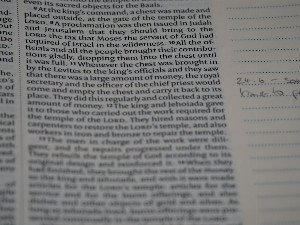Monica Febrianti Dewi, Sumarlam
Makna Simbolik Sesaji dalam Selamatan Tingkeban di Desa Karanganom Kabupaten Trenggalek
Introduction
Makna simbolik sesaji dalam selamatan tingkeban di desa karanganom kabupaten trenggalek. Telusuri makna simbolik 25 sesaji dalam selamatan Tingkeban di Desa Karanganom, Trenggalek. Pahami harapan dan filosofi masyarakat lokal untuk ibu hamil dan bayi.
Abstract
Tingkeban celebration is a culture of commemorating pregnancy at the age of seven months. In the tingkeban celebration, there are offerings that contain implicit meanings. The meaning of these offerings can be done symbolically by exploring the symbols in them. Therefore, this study aims to describe the symbolic meaning of offerings in tingkeban celebrations in Karanganom Village, Trenggalek Regency. This study includes qualitative research by applying an ethnographic approach. The data sources for this research are from events, informants as many as three native residents of Karanganom Village, Trenggalek Regency, and library sources that support this research. The data for this research are the names of offerings and their symbolic meanings contained in the tingkeban celebration in Karanganom Village, Trenggalek Regency. Data was collected through observation and structured interviews using the skill and listening method. Next, the data was analyzed using ethnographic methods. The results of this research show that there are 25 names of offerings in the tingkeban celebration in Karanganom Village, Trenggalek Regency and they can be divided into three categories, namely food, flowers and drinks. Each of these offerings contains an implicit meaning in it which is a symbol of the tingkeban safety offerings in Karanganom Village, Trenggalek Regency. The implied meaning in it also reflects the mindset of the local community which is closely related to the hopes and symbols for pregnant women and unborn babies and human life.
Review
This paper, "Makna Simbolik Sesaji dalam Selamatan Tingkeban di Desa Karanganom Kabupaten Trenggalek," offers a focused ethnographic exploration into the cultural significance of the Tingkeban celebration. The study primarily aims to describe the symbolic meanings embedded within the offerings (sesaji) presented during this traditional seven-month pregnancy commemoration in Karanganom Village, Trenggalek Regency. By meticulously documenting a specific local cultural practice, the research contributes valuable insights into the intricate relationship between community beliefs, rituals, and the symbolic objects used to express hopes and prayers for new life. Adopting a qualitative ethnographic approach, the research effectively utilizes data gathered through observation and structured interviews with three native residents of Karanganom Village, supplemented by library sources and direct engagement with the events themselves. The data collection focused on identifying the names of offerings and their symbolic interpretations. The study successfully identifies and categorizes 25 distinct offerings into three groups: food, flowers, and drinks. Crucially, the findings reveal that each of these offerings carries a profound implicit meaning, collectively reflecting the local community's mindset, aspirations, and symbolic representations concerning pregnant women, unborn babies, and the broader journey of human life. The strength of this study lies in its detailed documentation and interpretation of specific local cultural practices, which is essential for preserving and understanding regional traditions. The ethnographic methodology is well-suited for uncovering the nuanced, implicit meanings within the Tingkeban offerings. While the abstract clearly establishes the descriptive aims, future research could potentially build upon these foundational findings by exploring the dynamics of how these meanings are transmitted across generations or whether interpretations vary among different community segments. Additionally, a comparative analysis with similar rituals in other regions or an examination of how these traditions adapt to contemporary influences could further enrich the understanding of this significant cultural phenomenon.
Full Text
You need to be logged in to view the full text and Download file of this article - Makna Simbolik Sesaji dalam Selamatan Tingkeban di Desa Karanganom Kabupaten Trenggalek from Sutasoma : Jurnal Sastra Jawa .
Login to View Full Text And DownloadComments
You need to be logged in to post a comment.
Top Blogs by Rating
Beyond the Stereotype: Unpacki...
By Sciaria
Unlock Your Brainpower: Master...
By Sciaria
The Immortal Jellyfish: Unlock...
By Sciaria
Favorite Blog
The Ageless Enigma: What Biolo...
By Sciaria
Andragogy: The Secret to Engag...
By Sciaria
Your DNA's Ancient Story: Unlo...
By Sciaria





